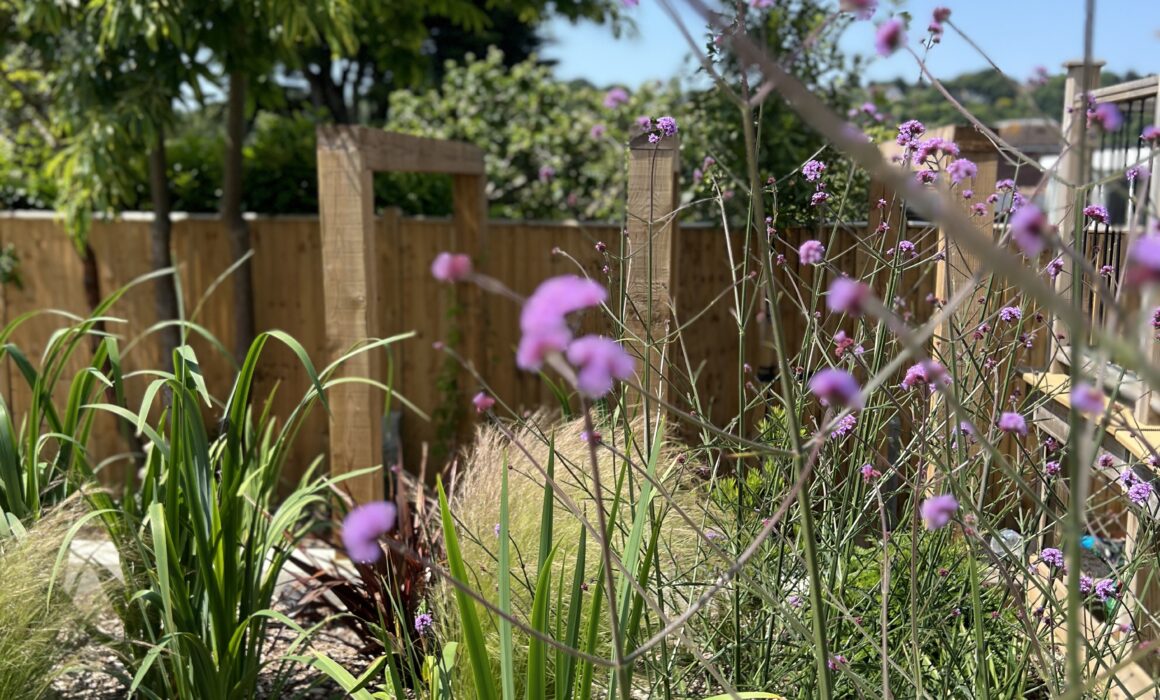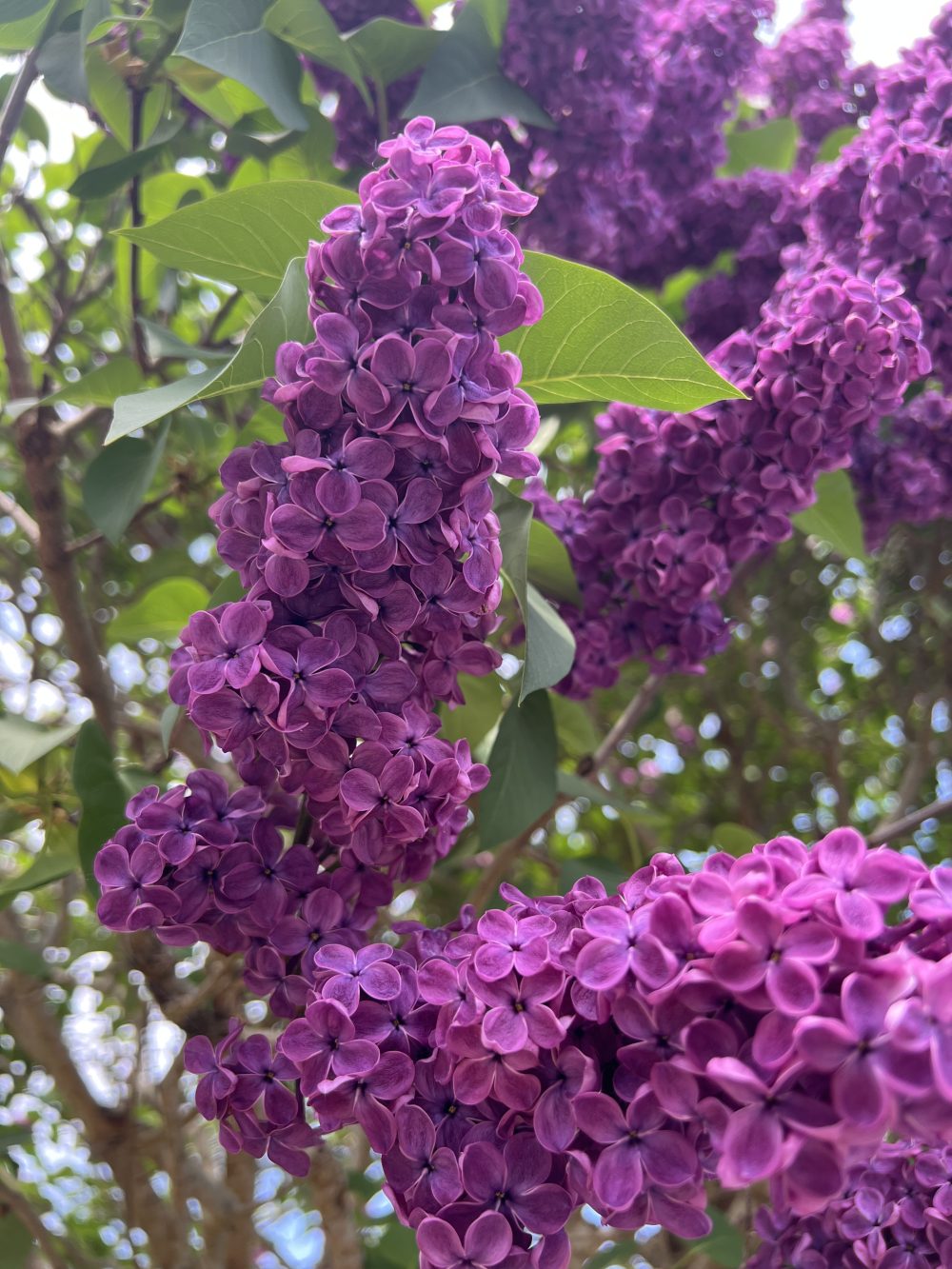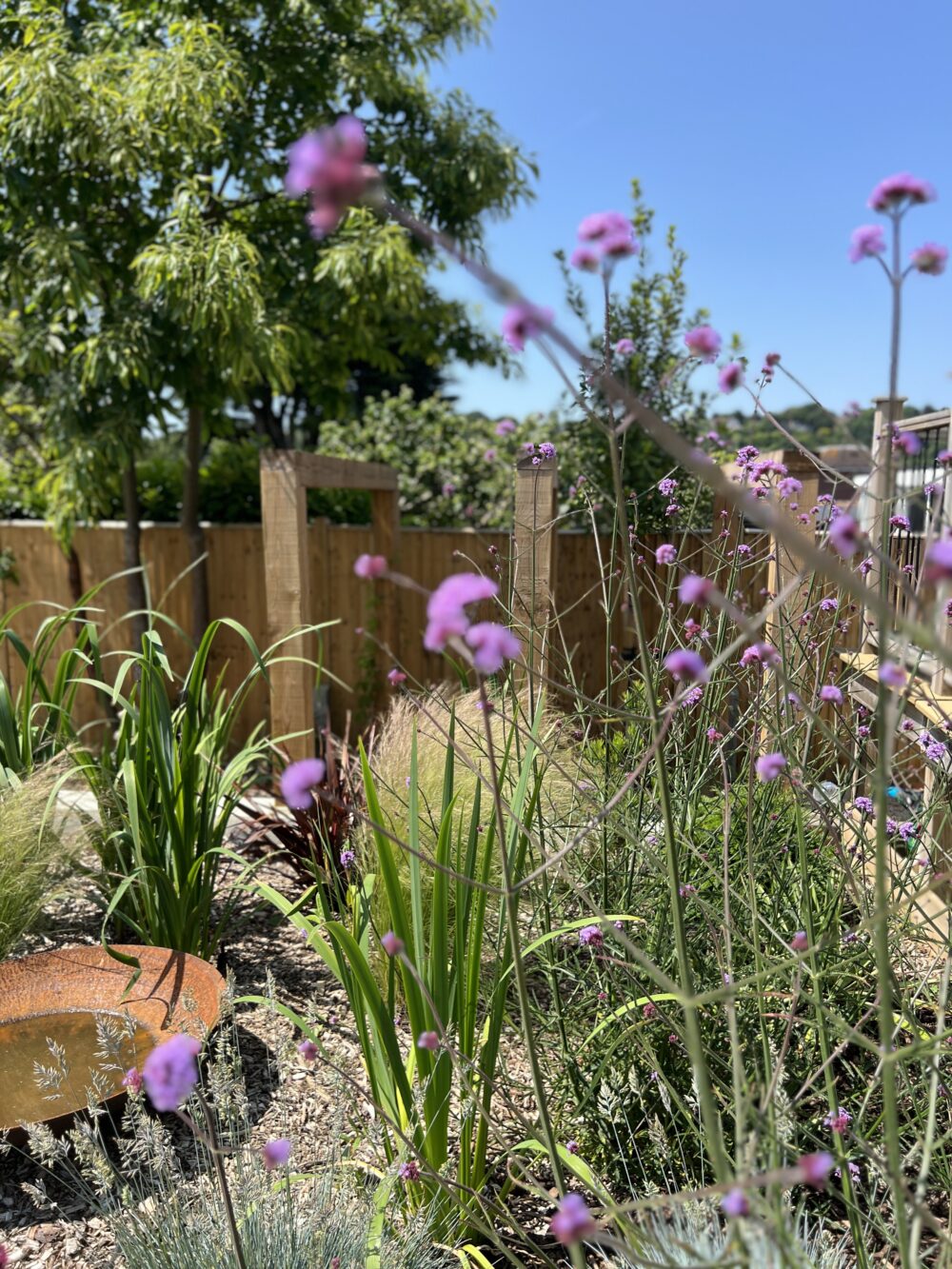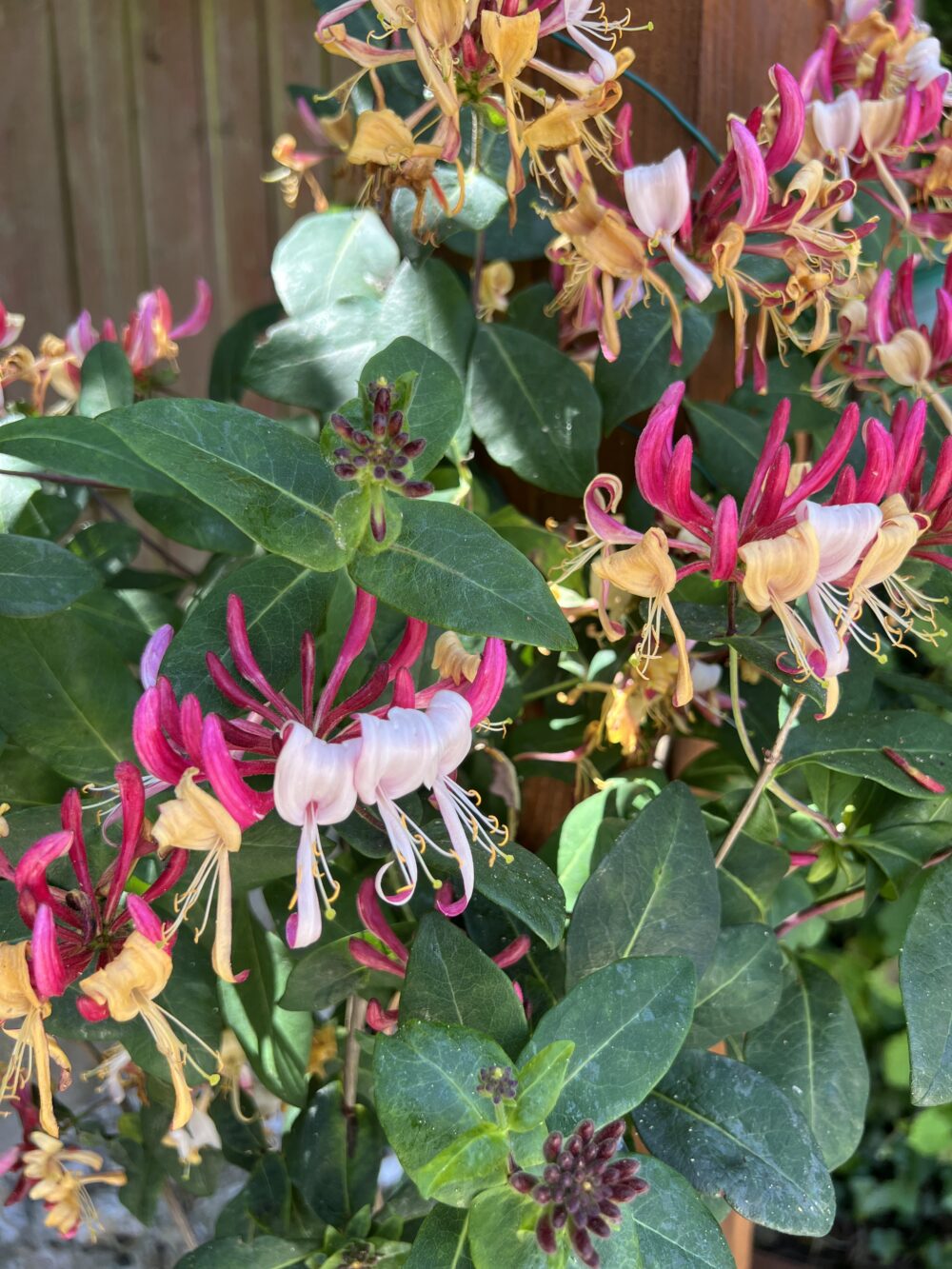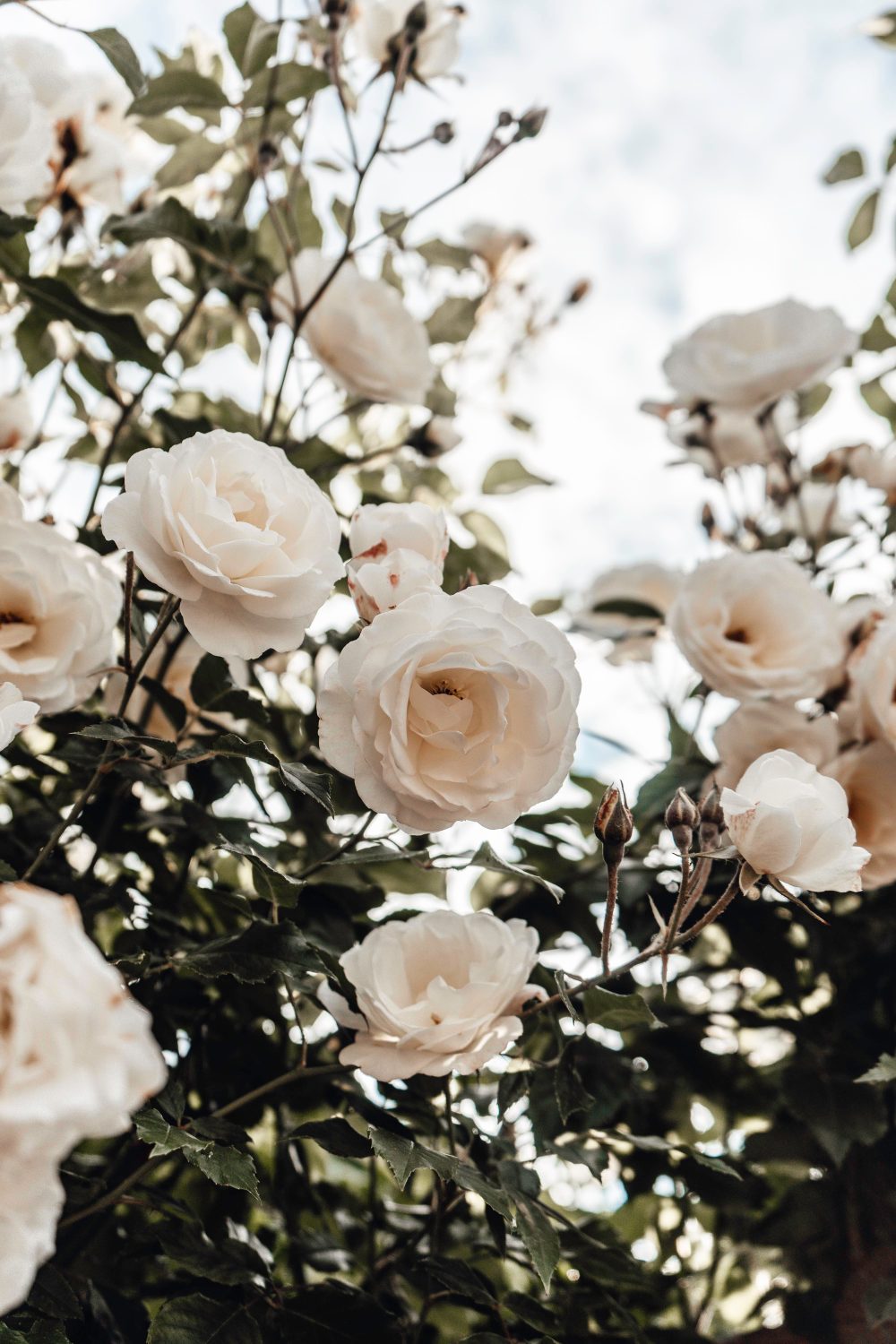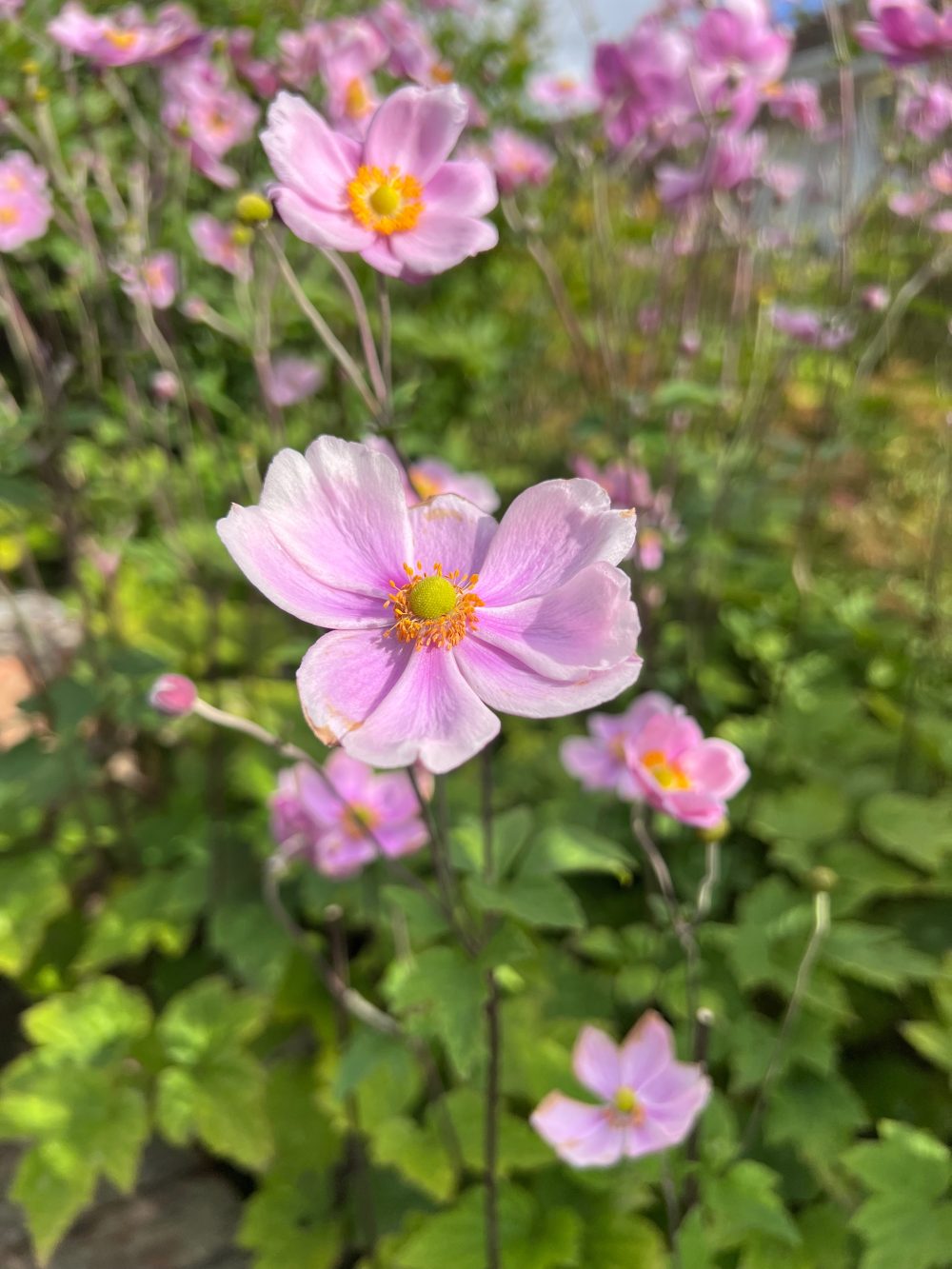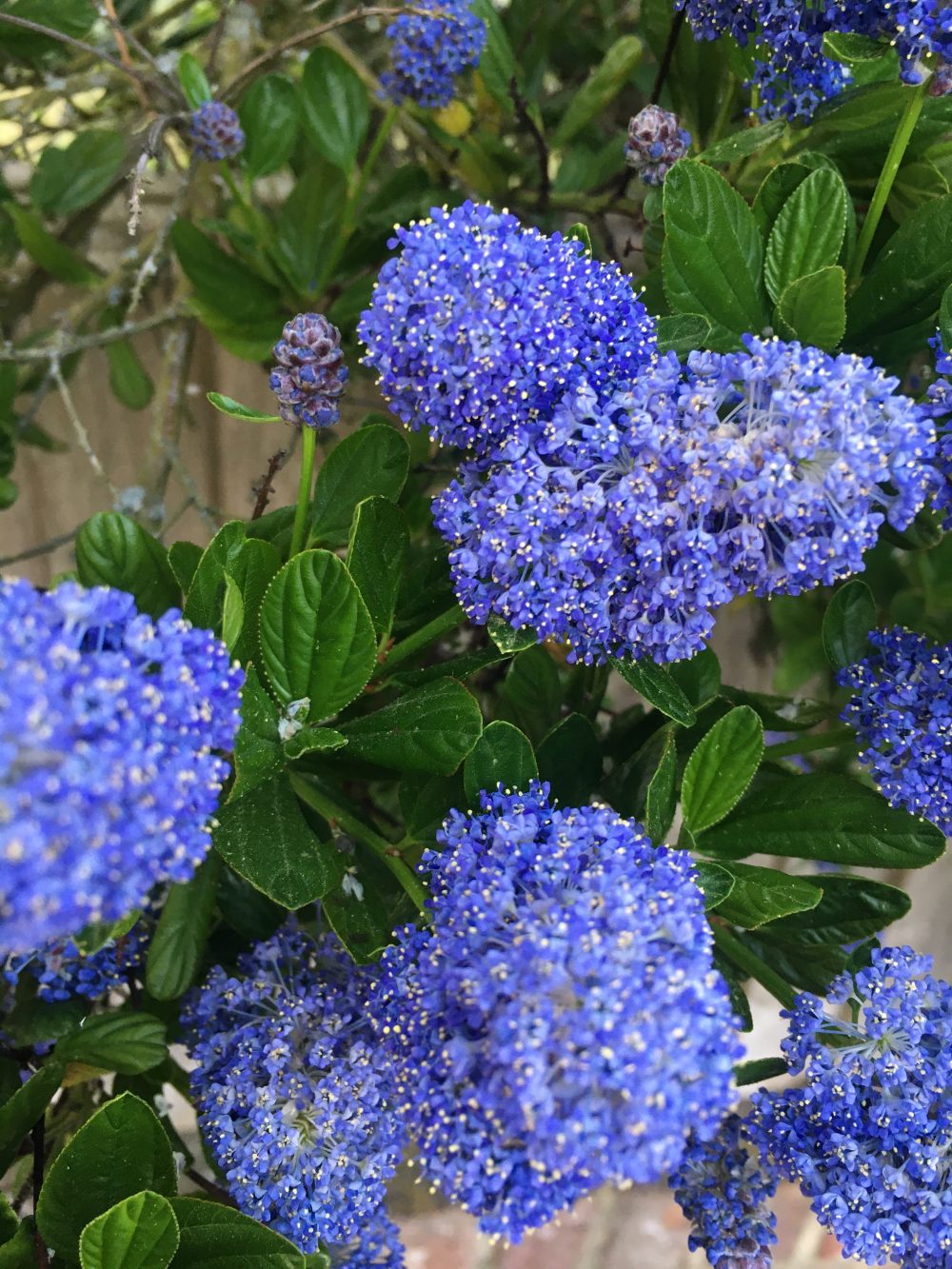Pollinator-friendly garden
Buzzing with Beauty: Creating Your Own Pollinator-Friendly Paradise (Without All the Fuss!)
Here at Studio Hummingbird, we believe a garden isn’t just about beautiful blooms and serene spaces (though we’re rather fond of those!). It’s about creating a living, breathing extension of your home, a place that delights your senses and nurtures nature. For our discerning clients in Sussex and Surrey, we understand the desire for an outdoor sanctuary that reflects their personality, offers a peaceful retreat after a demanding career, or provides a sophisticated backdrop for entertaining. And what better way to invite more life, vibrancy, and a delightful hum into your cherished outdoor space than by welcoming our tiny, winged friends – the pollinators!
You might be thinking, “Pollinator-friendly garden? Sounds a bit wild and messy.” Fear not! Creating a haven for bees, butterflies, hoverflies, and other delightful creatures doesn’t mean sacrificing elegance, sacrificing your well-earned relaxation time, or succumbing to horticultural chaos. In fact, it often means a more beautiful, resilient, and utterly charming garden that practically looks after itself. It’s about smart design that works with nature, not against it, giving you more time for the finer things in life, like that tranquil cup of tea on your perfectly paved patio.
Why All the Buzz About Pollinators? A Little Ecological Chat
These marvellous little workers aren’t just here to look pretty (though many of them are rather fetching, if you look closely!). They’re vital cogs in the magnificent machine of nature, quietly performing an indispensable service. Imagine this: around 75% of the world’s leading food crops and nearly 90% of wild flowering plants rely on animal pollination, primarily by insects. From the juicy strawberries in your Pimm’s to the majestic oak tree in your neighbour’s garden, pollinators are indispensable.
In the UK alone, we have over 250 species of bee, over 50 species of butterfly, and countless other pollinating insects like hoverflies, moths, and even some beetles. Each plays a crucial role in maintaining biodiversity and ensuring our ecosystems thrive. Unfortunately, many pollinator populations are in decline due to habitat loss, climate change, and pesticide use. By creating a pollinator-friendly garden, you’re not just adding beauty to your home; you’re actively contributing to a vital conservation effort, right there on your doorstep.
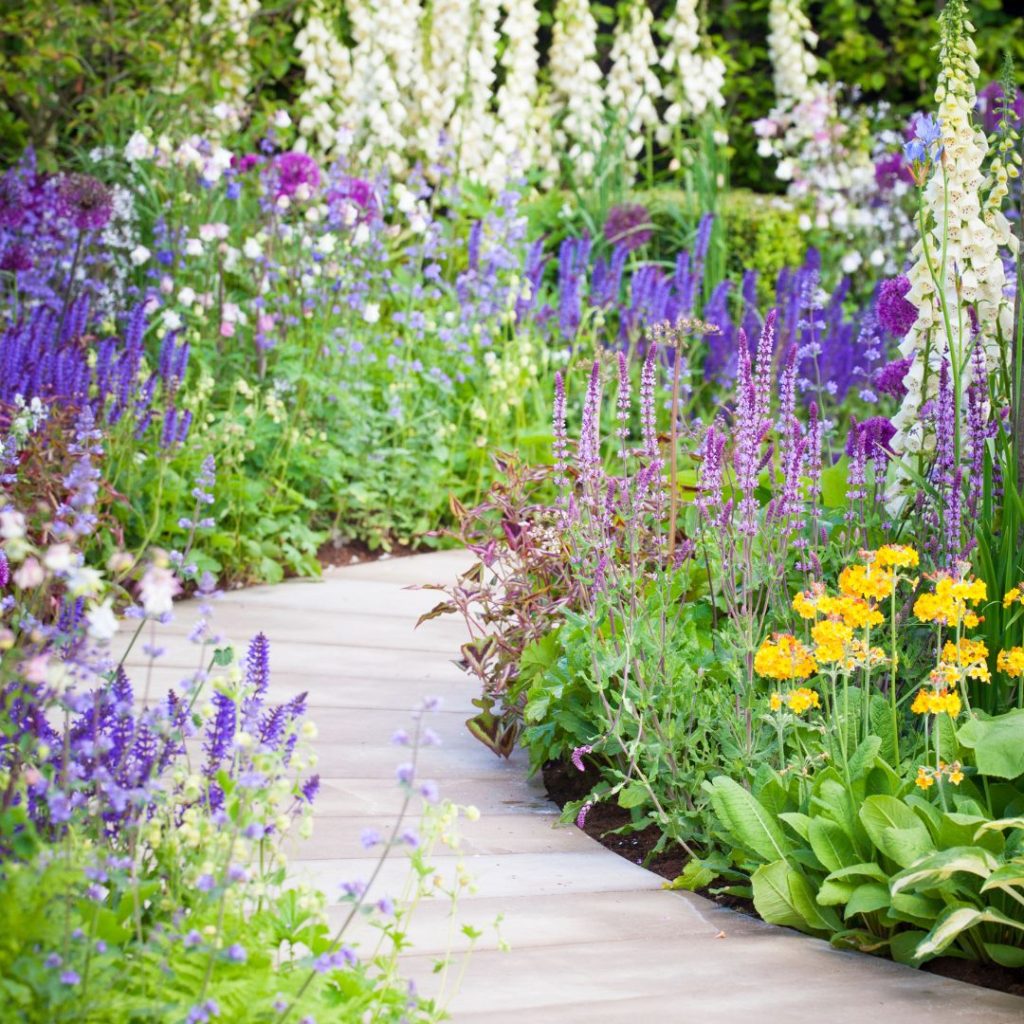
Crafting Your Pollinator Paradise: Elegant Tips from Studio Hummingbird
So, how do you roll out the red carpet for these essential garden guests without turning your carefully curated space into a messy wildflower meadow (unless that’s your cup of tea, of course!)? It’s simpler than you might think when you approach it with intelligent design. Our philosophy is all about creating bespoke spaces that are both stunning and sustainable, allowing you to relax and enjoy your outdoor oasis without constant upkeep.
-
Plant for the Pollinators (and Your Pleasure!): The cornerstone of any successful garden, especially a pollinator-friendly one, is thoughtful plant selection.
-
Native & Nectar-Rich Powerhouses: Our local pollinators adore native British plants because they’re perfectly adapted to our climate and offer the specific pollen and nectar sources these insects have evolved alongside. Think beyond the obvious!
-
Lavender (Lavandula): A classic for a reason! Its fragrant purple spikes are bee magnets and it thrives in sunny, well-drained spots. Perfect for a calming border or a low hedge.
-
Foxgloves (Digitalis purpurea): Tall, elegant, and beloved by long-tongued bumblebees who dive deep into their speckled bells. They add vertical interest and a touch of cottage garden charm.
-
Single-Flowered Roses: While those opulent, multi-petalled roses might look magnificent, they’re often a nightmare for pollinators to access. Opt for beautiful single-flowered varieties like ‘Rosa rugosa’ or the English Shrub Rose ‘Bring Me Sunshine’ which offer open access to their pollen and nectar. Less fussy for you, more rewarding for them!
-
Coneflowers (Echinacea purpurea): Striking daisy-like flowers that provide a late-season feast for bees and butterflies.
-
Thyme (Thymus vulgaris): A wonderfully aromatic herb that, when allowed to flower, is swarming with tiny bees and hoverflies. Great for path edges or rockeries.
-
Sedum (Hylotelephium spectabile): The ‘ice plant’ provides a crucial late-season nectar source as many other flowers fade. Its flat flowerheads are perfect landing pads for butterflies.
-
-
Variety is the Spice of Life (and Nectar!): Just like us, pollinators have different preferences. A mix of flower shapes, sizes, and colours ensures different species can access the goodies.
-
Flat Heads: For short-tongued insects like hoverflies (think Yarrow, Fennel).
-
Tubular Flowers: Perfect for long-tongued bees (Foxgloves, Honeysuckle).
-
Wide Open Blooms: Ideal for butterflies with their long proboscises (Daisies, Sunflowers).
-
-
Succession of Bloom: The ultimate pollinator buffet runs all year round! Ensure something is flowering from early spring right through to late autumn to provide a continuous food source.
-
Early Spring: Crocus, Snowdrops, Primroses, Hellebores, Willow.
-
Late Spring/Early Summer: Lavender, Alliums, Foxgloves, Comfrey, Hawthorn.
-
Mid-Summer: Echinacea, Verbena bonariensis, Phlox, Hollyhock, Buddleja.
-
Late Summer/Autumn: Sedum, Asters, Ivy, Mahonia. This ensures your garden is always alive with activity, not just a fleeting summer sensation.
-
-
-
Water, Water, Everywhere (But Nicely!): Just like us, pollinators get thirsty, especially on a warm British afternoon!
-
Shallow Dishes: A simple, shallow bird bath with a few stones or marbles for them to perch on, or even just a terracotta saucer filled with pebbles and a splash of water, can be a lifesaver. Ensure it’s kept clean.
-
Small Ponds or Water Features: If your garden allows, a small pond with gently sloped edges provides a natural drinking spot for a wider range of wildlife. Even a bubbling water feature can attract them. No need for a grand fountain, unless you fancy one and have the space for a dramatic statement!
-
-
Provide Cosy Nooks & Crannies: Pollinators need more than just food; they need shelter, nesting sites, and places to hibernate.
-
“Wilder” Corners: Consider leaving a small, undisturbed patch in a less visible corner of your garden. This can be as simple as allowing some grass to grow longer or piling up a few logs and branches.
-
Bug Hotels (or Insect Houses): These charming structures are readily available or can be a fun DIY project. They provide excellent nesting and overwintering spots for solitary bees, ladybirds, and other beneficial insects.
-
Leaf Litter & Dead Stems: Resist the urge to have a completely ‘tidy’ garden, especially in autumn. Leaving some fallen leaves in borders or not cutting back all perennial stems until spring provides vital insulation and shelter for overwintering insects. A bit of healthy neglect can go a long way!
-
-
Go Easy on the Chemicals (The Eco-Friendly Approach): This one’s a bit of a no-brainer, really. Pesticides and herbicides can harm pollinators, even those marketed as “bee-friendly” might have unintended consequences.
-
Embrace Organic Solutions: Focus on healthy soil, strong plants, and encouraging natural predators (like ladybirds for aphids).
-
Integrated Pest Management (IPM): This involves monitoring, understanding pest cycles, and only intervening with targeted, non-chemical methods as a last resort. A healthy, diverse garden tends to look after itself, finding its own natural balance. After all, prevention is better than a cure, especially when it comes to unwelcome garden guests!
-
What plants are sterile and not suitable for a pollinator-friendly garden?
When aiming to create a thriving pollinator garden, it’s crucial to understand that not all “flowering plants” are created equal in terms of their benefit to bees, butterflies, and other vital insects. Many cultivated varieties (cultivars) have been bred for human aesthetic preferences, often at the expense of their ecological value.
Here’s a breakdown of what makes a plant sterile or unsuitable for a pollinator garden, and examples of such plants:
What makes a plant “sterile” or unsuitable for pollinators?
-
Double Flowers (Flore Pleno): This is the most common culprit. In double-flowered varieties, the stamens (male reproductive parts that produce pollen) and sometimes the nectaries (structures that produce nectar) have been bred to transform into extra petals. This results in a very full, lush bloom but:
-
Little to no pollen: Pollen is a vital protein source for many pollinators, especially bees.
-
Inaccessible nectar: Even if nectar is present, the dense layers of petals make it difficult or impossible for pollinators to reach.
-
Confusing structure: The altered flower shape can make it hard for pollinators to recognise or navigate the flower.
-
Extended bloom time (sometimes): While a long bloom time sounds good, if the flowers offer no reward, it’s just a prolonged deception for pollinators.
-
-
Sterile Cultivars (Bred for Reduced Seed Set): Some plants are intentionally bred to be sterile or have very low seed set, often to prevent invasiveness or to encourage continuous flowering (as the plant isn’t putting energy into seed production). While this can be a good thing for controlling invasive species, it can also mean reduced pollen and nectar.
It’s worth noting that some “sterile” cultivars might still produce nectar, and some pollinators might still visit them, but they won’t contribute to the full life cycle support (pollen for larvae, seeds for birds, etc.).
-
Highly Modified Flower Forms: Beyond just “double” flowers, some cultivars have drastically altered flower shapes that make it difficult for pollinators to land or access the reproductive parts.
-
Foliage Color Breeding: Plants bred for dark red or purple foliage often contain high levels of anthocyanins, which can be deterrents or even toxic to some herbivorous insects. While this doesn’t directly relate to flower sterility, it indicates a focus on aesthetics over ecological function.
-
Plants with Inaccessible Nectaries: Even in single flowers, if the nectar is too deep within a long, narrow tube that doesn’t match the tongue length of common local pollinators, it won’t be beneficial.
Examples of plants/types of plants generally not suitable for a pollinator garden (or should be chosen carefully):
-
Many Roses (especially hybrid teas and most “double” varieties): Most modern roses, particularly those with very full, multi-petaled blooms, offer little to no pollen or accessible nectar.
-
Good alternatives: Opt for “single” or “semi-double” varieties, old-fashioned roses, or species roses (e.g., Rosa rugosa, Rosa gallica) which have open flowers with visible stamens.
-
-
Most Hydrangeas (especially Hydrangea macrophylla cultivars): Many common mophead and lacecap hydrangeas have a high proportion of large, showy, sterile florets. While some lacecaps have fertile florets in the center, many cultivars are bred to be almost entirely sterile.
-
Good alternatives: Some native hydrangeas (e.g., Hydrangea arborescens) have a higher proportion of fertile flowers.
-
-
Some Peonies (especially double-flowered varieties): Similar to roses, very full double peonies often have transformed stamens into petals.
-
Good alternatives: Single or semi-double peonies.
-
-
Some Camellias (double forms): Many ornamental camellias have dense double flowers.
-
Good alternatives: Single-flowered camellia species.
-
-
Many Marigolds (Tagetes spp. – particularly dense double cultivars): While some marigolds can attract pollinators, many of the very dense, pom-pom-like varieties are less useful.
-
Certain Chrysanthemums (dense double varieties): Similar to marigolds, the very full, double-flowered chrysanthemums offer little to pollinators.
-
Some Cultivars of Coneflower (Echinacea) and Dahlia (double forms): While the straight species of Echinacea are excellent, many modern Echinacea and Dahlia cultivars have been bred for complex double blooms that make it hard for pollinators to access.
-
Plants with “fl. pl.” in their botanical name: This stands for flore pleno and directly indicates a double-flowered cultivar.
Key takeaway for a pollinator-friendly garden:
When selecting plants, always look for:
-
Single flowers: Where the reproductive parts (stamens with pollen, pistil) are clearly visible and accessible.
-
Simple flower structures: Open bowls, flat clusters, or tubes that match the tongue length of your target pollinators.
-
Native species or close cultivars: These are often better adapted to local pollinators.
-
Diverse shapes and colours: To cater to a wider range of pollinator species.
-
Visible pollen: If you can see the yellow pollen on the anthers, it’s a good sign!
By being mindful of these characteristics, you can ensure your garden provides a true feast, not just a pretty display, for our essential pollinators.
Beyond the Basics: The Studio Hummingbird Touch
For our clients in Sussex and Surrey who have recently moved or downsized, or those with demanding careers, the idea of a garden that supports nature while being a sophisticated extension of their home is paramount. Here’s how we integrate these principles into bespoke, low-maintenance designs:
-
Zoning for Purpose and Pollinators: We can design your garden with distinct zones. A formal patio area for entertaining can seamlessly blend into a more naturalistic planting scheme at its edges, offering both elegance and ecological benefit. This allows for both the polished look you desire and the vital habitat for wildlife.
-
Vertical Gardening Solutions: For smaller urban spaces, vertical gardens, green walls, and hanging baskets can provide a surprisingly large surface area for pollinator-friendly plants without encroaching on precious floor space. Imagine a wall brimming with fragrant herbs and vibrant flowers, attracting bees right outside your garden office!
-
Year-Round Interest: A truly well-designed garden offers beauty in all seasons, and this naturally benefits pollinators too. We select plants that offer architectural interest in winter, early blooms in spring, lush foliage in summer, and rich textures in autumn, ensuring your garden is always a delight, for you and your buzzing visitors.
At Studio Hummingbird, our mission is to celebrate the poetry of nature and create gardens that are true assets to your well-being and health. We believe in rethinking gardens—moving away from a consumer and waste mindset towards a lifestyle that’s more in tune with nature. By embracing pollinator-friendly practices, we ensure your garden is not only a stunning visual masterpiece but a thriving, harmonious ecosystem.
If you’re looking to enhance both the value of your home and your well-being with a thoughtfully designed, buzzing garden, we invite you to book a complimentary discovery call with Studio Hummingbird today. Let’s create the outdoor sanctuary you’ve always dreamed of. Your garden (and the local wildlife!) will thank you for it!

